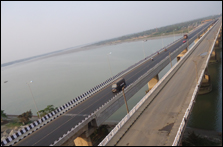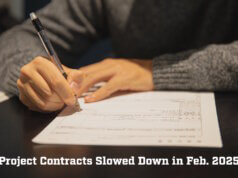
Managing Director
Ashoka Buildcon.
The status of infrastructure development is actually a reflection of the real development status of the country. It plays a crucial role in economic growth and also impacts the quality of life for the citizens. This fact is well agreed upon in our country too. Yet, our infrastructure growth largely remains sluggish at the national and state levels, writes Satish Parakh, Managing Director, Ashoka Buildcon.
Many reasons can be attributed to the inconsistent growth and development patterns in infrastructure sector. On some occasions we see that the scenario is totally in favour of building better highways, ports, airports, telecommunications, dams, power generators and so on. Then almost out of nowhere we see that small issues grow into major challenges and the entire momentum slows down.
Some challenges are, indeed, genuine, while others are created by malafide intentions. In either case each one of them can be well addressed and solutions can be provided. But in reality we find that the decision makers take unreasonable amounts of time to come up with the way forward. Progress delayed is as good as progress denied yet our laid back approach overpowers the need for fast forward development.
Effective coordination
Our political system is responsible for problems in development of highways in our country. A decent highway project needs effective coordination between the central government, the state government and also the local bodies. In our case, the coordination between the three is far from rapid and several issues end up in the ‘pass the buck zone.’ Files move from desk to desk at a painful pace leaving the developers at the mercy of approving authorities.
Land acquisitions, environmental clearances etc. are turning into nightmares and the interference of self-interested locals, who find ways and means to hamper projects, only add up to the problem.
With special mention to BOT-based projects, a developer who risks huge amounts of efforts, time and funds in developing the highway, has to face immense resistance in collecting toll, an amount which is basically the returns on his risks and investments.
Escalations in prices of raw materials, labour-related issues, accidents on highways due to careless driving, are problems that highway developers have to face very frequently.
Clearance process
Despite the problems, we can see that the future would definitely be brighter. Things have improved from what they were in the past and slowly but steadily we would be able to streamline our highway development process in the times to come.
Many of the problems are common in nature and repetitive. Some standard procedures can be established to avoid delays. The decision makers in government offices are capable and empowered to speed up clearance process. It is time that they take it upon themselves to work in close coordination with the involved parties and speed up the construction process.

The new government was chosen by the public because of its manifesto to set the stagnant wheels into motion. The expectations are high but not unreasonable. It can be expected that the government machinery will start functioning with a more result-oriented approach. The positive approach should penetrate even to the last levels so that the entire system shifts into a positive gear.
Speedy clearances should not be understood as compromise on standards. The quality, environment as well as safety standards should be comprehensive and strictly adhered to.
We expect the government to educate the public at large upon the need and benefits of BOT-based highway projects. There can be alternative methods for private participation in the forms of annuity-based projects, or through land development rights. If given a serious thought the government can bring the developers together and come up with solutions.
We also expect the government to pay attention to safety issues. We all know that developed countries are very strict about implementing safety norms on highways. The strictness applies not only on highway contractors but also on commuters. Speeding is a very important factor for accidents in India. Not wearing seat belts or helmets too proves to fatal in many cases.
Private equity
Another expectation from the government is with respect to PE investments. Although an exit policy for investors is in place, there is a need to further streamline the policy such that it can be more attractive for the private players and can facilitate new influx of funds in the sector.
Earlier, there used to be a section 10(23G) for income earned by financial institutions for loans/investments in infrastructure projects. Accordingly, interest rates were reduced to the extent of tax saving. This section should be reintroduced.
It is beyond doubt that highways shall remain the lifeline for progress in the entire country. The debate regarding BOT-based projects vs. government funded projects is likely to continue for a little longer but that does not mean that the potential would diminish in any ways.
We can see that even the state governments have started focusing on building better and faster highways for the commuters. This has opened up huge opportunities for developers. As long as progress is the objective, the potential for highway construction shall stay alive.











